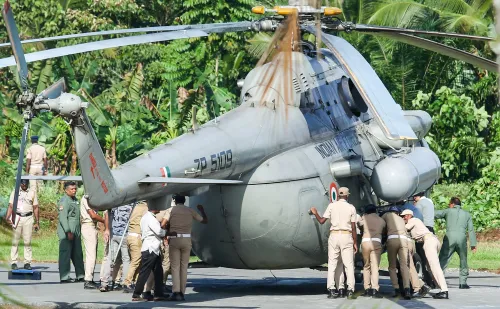What Actions Are Airlines Taking After the Air India Crash?

Synopsis
Key Takeaways
- Airlines are inspecting fuel switch mechanisms following the Air India crash.
- The AAIB report suggests a malfunction in locking features may have contributed to the incident.
- Etihad Airways has issued directives for careful examination of fuel switches.
- The FAA has deemed current designs of fuel switches as safe.
- Air India did not follow FAA advisories regarding inspection protocols.
New Delhi, July 14 (NationPress) Following the preliminary findings of the Aircraft Accident Investigation Bureau (AAIB) regarding the tragic Air India crash, airlines have initiated inspections of the fuel switch locking mechanism in their Boeing 787 aircraft. The initial report indicated that both engines experienced an abrupt fuel cut-off shortly after take-off, resulting in the catastrophic accident. Experts have suggested that the locking feature of the fuel switches may have experienced a malfunction.
Furthermore, the AAIB report stated that there were no “recommended actions” for either Boeing, the aircraft manufacturer, or GE, the engine producer, at this stage.
Etihad Airways has directed its engineering team to examine the locking mechanism of the fuel control switches on their B-787 aircraft, emphasizing caution in the operation of these switches.
In a safety circular described as a “standard work package,” Etihad Airways instructed its engineers to comprehensively assess the locking feature of the fuel control switches to ensure “proper engagement.”
“Gently attempt to move (without excessive force) the Left (L) fuel control switch on the P10 Control Stand from ‘CUT-OFF’ to ‘RUN’ without lifting the switch,” stated the circular. “If the switch cannot be shifted without lifting, the locking feature is operational. No further action is needed. Move on to the next step,” it continued.
The AAIB report highlighted that the fuel cut-off switches for engines 1 and 2 on the Air India aircraft transitioned from RUN to CUT-OFF within just a second of each other.
A cockpit voice recording revealed one pilot questioning the other about the fuel cut-off, to which the second pilot replied that he “did not do that.”
Meanwhile, the US Federal Aviation Administration (FAA) has assured global civil aviation authorities that the design of fuel control switches, including the locking feature, installed in various Boeing planes, including the Dreamliner involved in the Air India incident, is safe.
The AAIB report also referenced a 2018 bulletin from the FAA that cautioned about a potential malfunction of fuel control switches made by Honeywell, which are utilized in several Boeing models, including the 737, which employs the same switches.
This bulletin suggested that airlines operating Boeing models, including the Dreamliner, should examine the locking mechanism of the fuel 'cut-off' switches—a precaution not adhered to by Air India, as noted in the AAIB report.
Air India indicated to investigators that they did not perform the recommended inspections as they were considered “advisory” and not “mandatory.”
The 2018 bulletin was based on reports indicating that the fuel control switches were installed with the locking feature disengaged, according to the FAA. When approached for a comment, the FAA stated that it had no further information beyond the notification.









